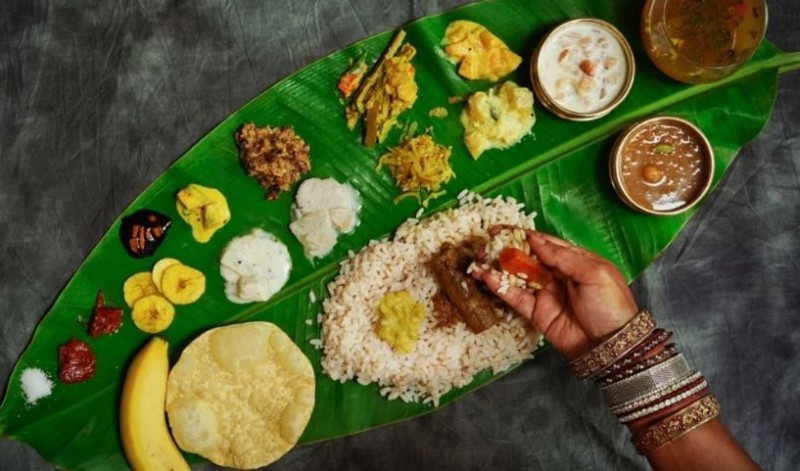
In a world driven by trends and health-conscious choices, dining on a banana leaf may seem like a throwback to tradition. Yet, this age-old practice carries not only a sense of style but also a treasure trove of health benefits. Let's delve into the science and logic behind this practice, which spans generations.
Banana leaves, abundant in tropical regions, have been used for centuries as eco-friendly plates in many cultures. Little did our ancestors know that these leaves were not just biodegradable dinnerware but also a reservoir of valuable nutrients. When food is placed on banana leaves, something remarkable happens. Polyphenols, flavonoids, and proanthocyanidins, all with powerful antioxidant properties, infuse into the meal.
Nutrient Bank on a Leaf.. These leaves act as a "nutrient bank" by releasing these compounds into the food. Polyphenols, known for their heart-protective effects, help reduce the risk of cardiovascular diseases. Flavonoids, on the other hand, play a role in improving blood flow and reducing inflammation. Proanthocyanidins contribute to overall well-being by combating oxidative stress.
Digestive Dynamo.. Banana leaves don't stop at nutrient infusion; they aid digestion too. The natural waxy coating on the leaves repels water but doesn't absorb it. This property keeps the food moist, preventing it from becoming dry or sticking to the leaf. Moreover, the leaves themselves contain enzymes like polyphenol oxidase, which can break down certain components of food, making it easier for our digestive system to process.
Bacteria's Banishment.. The benefits extend beyond nutrient enhancement and digestion. Banana leaves have antimicrobial properties. They contain compounds that can inhibit the growth of harmful bacteria. This is especially important in regions where hygiene standards may vary. Using banana leaves as plates can reduce the risk of foodborne illnesses by helping to kill bacteria present in the food.
The Logic Behind Tradition.. Now, let's connect the dots between tradition and science. Our ancestors may not have understood the chemistry, but their choice to use banana leaves as dinnerware makes perfect sense in retrospect. It aligns with sustainable practices, as these leaves are readily available and biodegradable. Furthermore, it promotes a more eco-friendly dining experience.
In a world increasingly concerned about waste and health, revisiting age-old practices like dining on banana leaves offers a unique blend of style and science. It's a reminder that sometimes, the most stylish choices are also the healthiest and most environmentally conscious ones. So, the next time you're presented with the opportunity to dine on a banana leaf, embrace the tradition, and savor the benefits it brings to both your health and the planet.
Building a Lunar Home: The Essentials for Human Settlement on the Moon
Hindi's Rich Heritage: From Ancient Roots to Modern Influence
Enthusiastic Supporters Gather as CM Yogi Adityanath Pays Respects to Lokmata Devi Ahilya Bai Holkar